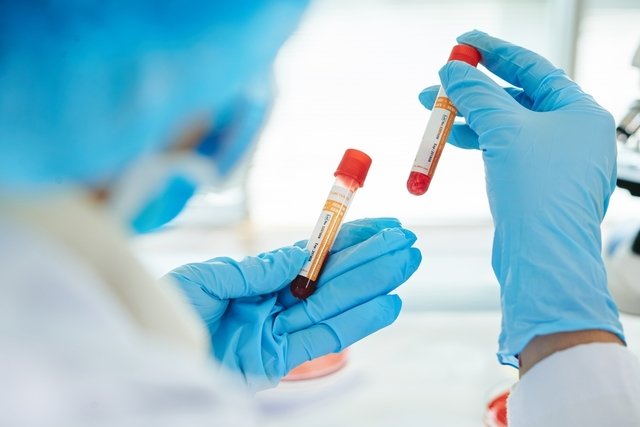Glycated hemoglobin, or Hb1Ac, is a blood test that aims to assess glucose levels in the last three months before taking the test.
This happens due to the fact that glucose can remain linked to one of the components of the red blood cell, hemoglobin, throughout the red blood cell cycle, which lasts around 120 days.
Thus, the glycated hemoglobin test is requested by the doctor to identify diabetes, monitor its development or check whether the treatment of the disease is being effective, and is carried out through the analysis of a small blood sample collected in the laboratory.

What is glycated hemoglobin for?
The glycated hemoglobin test is carried out with the aim of evaluating glucose levels in recent months, being useful in diagnosing diabetes. Furthermore, in the case of people who have already been diagnosed with diabetes, this test is useful to check whether the treatment is being effective or whether it is being carried out correctly, as if it is not, a change in the result may be seen.
When the glycated hemoglobin value is much higher than the normal considered by the laboratory, the person is more likely to develop complications related to diabetes, such as cardiac, renal or neuronal changes, for example. See what the main complications of diabetes are.
Do you have questions about your exam results?
Therefore, to diagnose diabetes, a fasting glucose test, glycated hemoglobin and/or the glucose tolerance test, the OGTT, is normally requested. Find out more about the tests that help diagnose diabetes.
Reference values
The reference values for glycated hemoglobin may vary depending on the laboratory, however, in general, the values considered are:
- Normal: Hb1Ac between 4.7% and 5.6%;
- Pre-diabetes: Hb1Ac between 5.7% and 6.4%;
- Diabetes: Hb1Ac above 6.5% in two tests carried out separately.
Furthermore, in people already diagnosed with diabetes, Hb1Ac values between 6.5% and 7.0% indicate that the disease is being controlled well. On the other hand, Hb1Ac values above 8% indicate that diabetes is not being controlled correctly, with a greater risk of complications and requiring changes in treatment.
The glycated hemoglobin test does not require any preparation, however, as it is normally requested together with the fasting glucose test, it may be necessary to fast for at least 8 hours.
Blood glucose calculator
To find out if your glycated hemoglobin result is normal, enter your result into the calculator below:
When to repeat the exam
The glycated hemoglobin test must be carried out at least twice a year by patients with controlled diabetes or every 3 months in people who do not use medication properly and/or when diabetes is not controlled to check circulating glucose levels. .
Bibliography
- Beuy, Drinks; Wiwanitkit, Viroj . Very low HbA1C, is it a problem?. Iranian Journal of Pathology. 379–380., 2018
- NATIONAL DIABETES CARE ASSOCIATION. Glycosylated hemoglobin. Available at: <https://www.anad.org.br/hemoglobina-glicosilada-voce-sabia-que-este-exame-pode-mostrar-o-comportamento-da-glucose-no-seu-organismo/>. Accessed on 02 Jul 2020

Sign up for our newsletter and stay up to date with exclusive news
that can transform your routine!
Warning: Undefined array key "title" in /home/storelat/public_html/wp-content/plugins/link-whisper-premium/templates/frontend/related-posts.php on line 12
Warning: Undefined array key "title_tag" in /home/storelat/public_html/wp-content/plugins/link-whisper-premium/templates/frontend/related-posts.php on line 13



